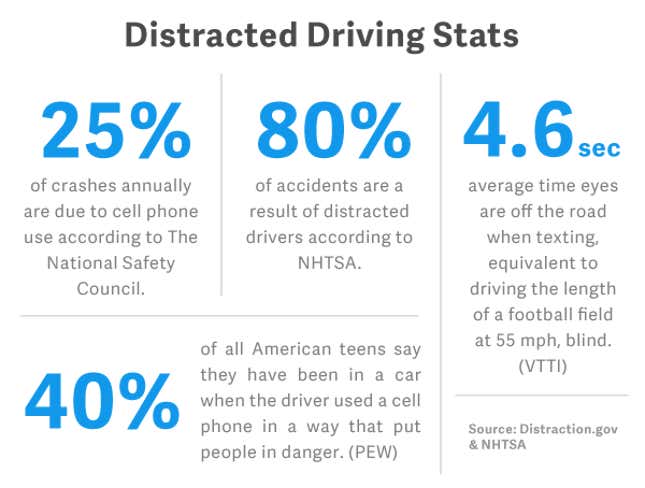How close are we to driverless cars? California, with Google playing no small role, recently drove driverless cars closer to reality by legalizing them. (They weren’t illegal in any states. When laws were written, no lawmakers envisioned a need for such a provision.) But now, after years of development, the technology all but exists for driverless cars to safely navigate busy roads and highways.
Using a combination of GPS-based sensors and road data, these cars can interpret and, more importantly, react to their surroundings, other cars, weather, pedestrians, et al. However, a trifecta of barriers still stand between you and a driverless car in the open market. First, the technology needs to be proven.
Like any innovation that stands to fundamentally change how we live — as this previous qz.com article elaborates on the potential — the driverless capabilities need to be slowly introduced so unintended consequences will, in fact, have no major, sudden negative impact.
Computers are already heavily involved in the driving experience. In a new car, the driver doesn’t physically turn or brake. It initiates the car’s computer by turning the wheel or pressing on the brake pedal to act appropriately. Now, expanding on the reliance of the cars’ computers, companies like Cadillac will introduce features such as advanced cruise control systems. By the middle of the decade, Cadillac plans to roll out this incremental step toward a driverless car. Check out the video below for more.
Technology is only as good as human’s faith in technology, however. The second hurdle will be to gain the trust of the people. There is an opportunity in this technology to make the driving experience much safer. Text messages or emails from the boss don’t distract computers; computers don’t get angry at other drivers, nor do they have just one more drink on Friday night. Increased safety is one of driverless cars’ biggest selling points. However, folks need to be reassured that in fact cars will be more in control when driven by a computer than by humans. After all we are fallible — and distracted:

People will only learn to have faith in these systems as we begin to try them. Cadillac may be unwittingly assimilating drivers to the driverless experience under the guise of “advanced cruise control.” Otherwise, people will be thrust into heart-pounding swerves and turns like scientist and self-proclaimed cautious driver Kathy Sykes is as she steps into a Google car for a ride (of her life).
Finally, laws, specifically those around auto insurance, will need to be modified. As of 2011, only 12 states allow for true no-fault auto insurance. This means that regardless of whose fault it is, the auto insurance company will cover the costs. Auto companies will not sell driverless cars, most likely, until all 50 states adopt such laws.
There is much potential in driverless cars and how they will impact our lives. As people realize that driverless cars will make the roads safer, both politicians and auto manufacturers will begin to facilitate the changes necessary for these cars to get to the open market.
This article is written on behalf of Cadillac and not by the Quartz editorial staff.
